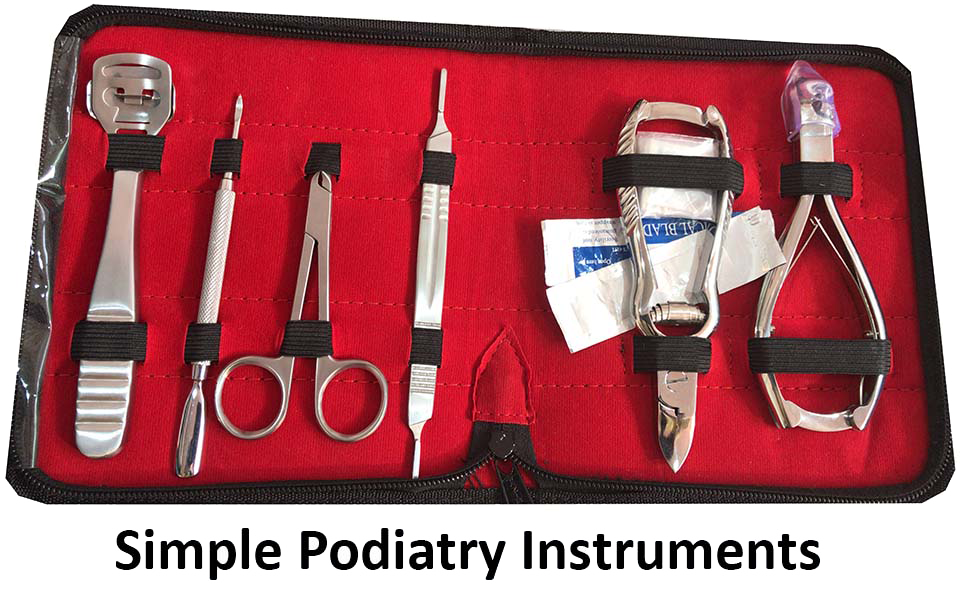Diabetic Foot Evaluation Lab
Our All-in-one Complete Diabetic Foot Lab model DIABETIK MINILAB is our one of the best products that can measure and document all the important parameters such as the Ankle Brachial Index(ABI), Toe Brachial Index(TBI), Doppler Waveform, Monofilament 10gm, Biothesiometry, Foot Pressure and Foot Temperature. In addition to the above reports, a master report is created by the software will capture the medical history with symptoms of the patient, dermatological exam, musculoskeletal exam, vascular and footwear exams along with the recorded test results and their interpretations. A colorful 6 pages report is generated by the software.
The Diabetik Minilab is supplied with all the accessories and a sturdy trolley. An all-in-one scanner/copier/printer of a particular specification is supplied with the device. A Windows 7/8/10 operated laptop is to be arranged by the buyer.
Vascular Screening:
Whenever one suspects Peripheral Arterial Disease (PAD), the clinician must perform a few non-invasive vascular testing methods that are commercially available and widely implemented.
Features:
• Unidirectional 8MHz probe
• Photo-plethysmograph PPG Toe sensor
• BP cuffs for ABI/TBI
• Ankle Brachial Index (ABI)
• Toe Brachial Index (TBI)
• Doppler Velocity Waveform
• Venous Examination (No documentation)
• Carotid, Penile examination (No documentation)
Neuropathy Screening:
Diabetes can result in long-term health complications, with one of the most common being microvascular damage that leads to diabetic neuropathy (DN), which affects multiple body systems and increases amputation risk. A typical form of DN is diabetic peripheral neuropathy (DPN), which is known to be a primary cause of balance issues, and sensation loss in the feet, and a major contributor to nontraumatic lower-limb amputations. Loss of sensation in the foot can be diagnosed with a 10gm Monofilament and a Biothesiometry.
Semmes‐Weinstein monofilament test (SWMT): The SWMT is a common screening tool for assessing the sensory function and the loss of pressure sensation (light touch perception). A 10-gm monofilament test (also referred to as the 5.07 monofilament) is the most common in practice. 25 Nos of such monofilament in a box are supplied with the device. The filament is applied to at least six sites on the foot until it buckles, which occurs at 10 g of linear pressure when the patient is asked to detect its presence. If it is not detected on at least four out of six sites, then the protective sensation is considered to be lost.
Biothesiometry:
Vibration perception threshold (VPT) has been shown to be strongly associated with foot ulceration. VPT determination by using a Digital Biothesiometer has been used to identify peripheral sensory neuropathy and subjects at risk of the foot. Digital Biothesiometer helps us quantitate the threshold and monitor progressive changes or trends on following up testing.
Sensory neuropathy increases the risk of foot ulcerations by seven-fold and peripheral arterial disease (PAD) by three folds in people with diabetes. Peripheral neuropathy is the major causal factor in the development of foot ulcerations among diabetic subjects.
Early detection of vibration perception threshold (VPT) helps better prevention. Prevention is better than no cure. 50% of all non-traumatic amputations occur in diabetes which is a high-risk group.
.
Features:
• First Company to introduce Digital Biothesiometry in India - 2003
• Digital 0 to 50 Volts indicator
• Vibrator with Mute/Check & Record key
• Full solid-state design
Plantar Pressure measurement:
Understanding foot biomechanics is an important component in the evaluation of diabetic foot. The abnormal plantar pressure distribution plays a key role in the formation of plantar calluses and diabetic foot ulcers. Abnormal value of foot pressure, as well as neuropathy, could play an important role in the formation of plantar ulcers independently. Current international guidelines advocate achieving at least a 30 % reduction in maximum plantar pressure to reduce the risk of foot ulcers in people with diabetes.
Features:
• Foot Imprinter Harris Mat FM1111
• Licensed software to scan and image process FM1111 foot image.
• Report to include the footwear measurements.
• Multi-color picture image indicates the pressure mapping.
IR Foot Temperature measurement:
Monitoring of skin temperatures at the foot, along with subsequent offloading can dramatically reduce the occurrence of ulcerations. The defined threshold reported in numerous studies is an asymmetrical difference of 4ºF (2.2°C) between the sites. Because most patients at risk for ulceration are also at risk for Charcot, monitoring foot temperature would be an effective tool.
Features:
• Simple one-handed operation
• Laser targeting
• oC / oF select switch, Accuracy +/- 2%
• Early marker for Charcot foot
• Can reduce the risk of ulceration.
Send Message







